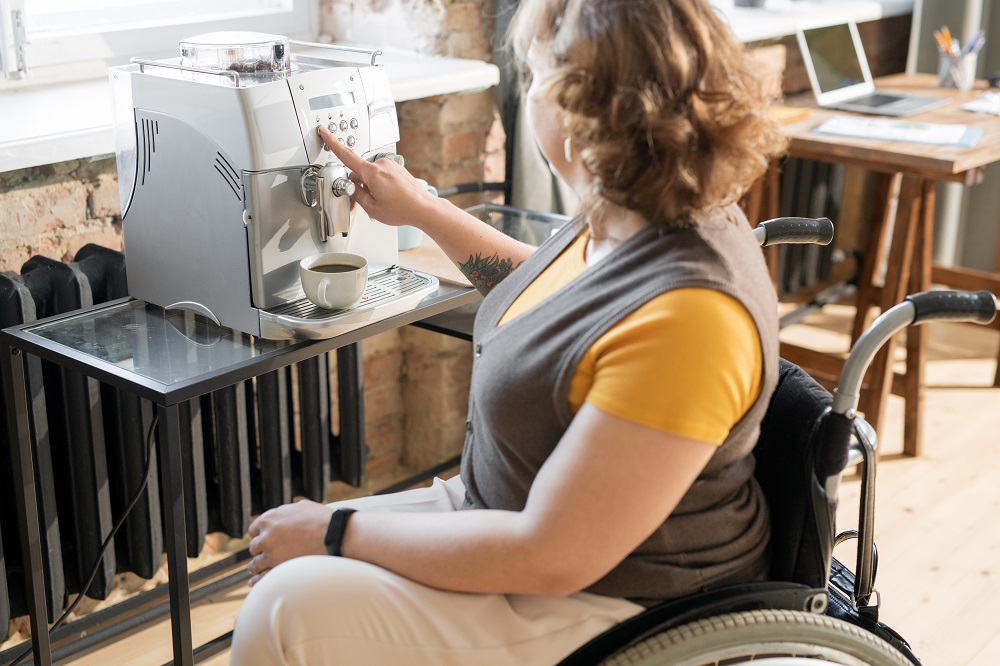This advance will make it possible to determine, on an individual basis, the level of chest mobility in patients who have suffered a spinal cord injury and offers a very useful tool which permits objective and quantifiable follow-up during rehabilitation sessions.

Injuries to the spinal cord, at the cervical or thoracic level, cause the deterioration of motor and sensory functions in parts of the body that are below the point of injury. One of the health complications that this can entail is lack of control of the trunk muscles, essential for tasks such as maintaining balance, eating, dressing, picking up or manipulating objects, and many other daily tasks.
Despite the great impact of trunk motor function on the quality of life of patients, there is no objective and standardized system for its measurement. Clinical evaluation is the most common method, but it includes a high degree of subjectivity as it is based on qualitative scales.
Now, a team of researchers led by Raimon Jané, leader of the Group for Processing and Interpretation of Biomedical Signals (BIOSPIN) from the Institute of Bioengineering of Catalonia (IBEC) and professor at the UPC; and by Hatice Kumru, neurologist and coordinator of Neurophysiology at the Institut Guttmann, and Joan Vidal, teaching director and leader of the Institut Guttmann Neuro-repair and advanced therapies group have developed a new methodology that can objectively and quantitatively determine trunk function in patients with a spinal cord injury. The new approach, which was recently published in the Journal of Neural Engineering, combines the electromyogram (EMG) with the accelerometer of a smartphone which can complement a clinical evaluation with objective data.
A method that combines muscle activation with movement patterns
The starting point of this project was another study recently published in the Scientific Reports journal, where the same team of researchers fine-tuned this new technique by measuring thoracic function during a reaching task performed by healthy human subjects sitting in a wheelchair.
The new approach developed by the Jané and Kumru groups is based on combining activity measurements of different chest muscles, using electromyography (EMG), with movement patterns such as speed, acceleration and inclination angle. Researchers have used a smartphone-type accelerometer fixed to the patient’s chest region as a simpler and more cost-effective alternative to motion capture systems.
Once the methodology was fine-tuned using healthy human subjects, the second study studied 24 patients with spinal cord injuries in the cervical or thoracic area, who had to move their trunk to reach a button located 15 centimeters away from their wheelchair.
The analysis and interpretation of the EMG and accelerometer signals from smartphones has allowed us to obtain neurophysiological and movement information to quantitatively evaluate trunk function in patients with spinal cord injury, in a personalized way.
Yolanda Castillo-Escario, IBEC
Personalised and objective restorations
Researchers have also evaluated trunk function in response to a startling acoustic stimulus (SAS), which is known to shorten the response time when performing a task (an effect known as StartReact). They have determined the effects of SAS as a destabilizing stimulus and a trigger of StartReact in patients with spinal cord injury, who must compensate for the loss of balance to control their posture, due to their impaired stability.
For the first time, the StartReact effect in the trunk muscles of patients with spinal cord injury has been studied and its effect has been quantified and also differentiated between cervical and thoracic injuries, by interpreting biomedical signals.
Raimon Jané, IBEC
The results showed motor changes and the use of compensatory postural strategies that can have important consequences in rehabilitation, such as delayed responses and lateral deviations that demonstrate compromised postural control in patients with a spinal cord injury. The availability of quantitative data contributes to the understanding of trunk motor function and postural stability in these patients. The new methodology provides an objective approach for the evaluation of patients with a spinal cord injury, beyond the current studies, which will allow a personalized rehabilitation for their functional situation.
Our study seeks to monitor, without subjectivity, the effect of trunk stability as a consequence of a spinal cord injury.
Hatice Kumru, Institut Guttmann
The methodology we have developed opens the door to create personalised, objective and quantifiable trunk treatment and rehabilitation programmes.
Joan Vidal, Institut Guttmann
Reference articles:
Yolanda Castillo-Escario; Hatice Kumru; Josep Valls-Solé; Loreto García-Alen; Raimon Jané; Joan Vidal. Quantitative evaluation of trunk function and the StartReact effect during reaching in patients with cervical and thoracic spinal cord injury. 2021, J. Neural Eng. 18 0460d2.
Yolanda Castillo-Escario; Hatice Kumru; Josep Valls-Solé; Loreto García-Alen; Joan Vidal; Raimon Jané. Assessment of trunk flexion in arm reaching tasks with electromyography and smartphone accelerometery in healthy human subjects. 2021, Sci Rep 11, 5363.
Castillo-EscarioandR. Jané are members of the BIOSPIN group of IBEC, UPC and the Center for Biomedical Research Network- Bioengineering, Biomaterials and Nanomedicine (CIBER- BBN). H. Kumru, L. García-Alen and J. Vidal are members of the Institut Guttman Neurorepair and advanced therapies group. J. Valls-Solé is a member of IDIBAPS.





